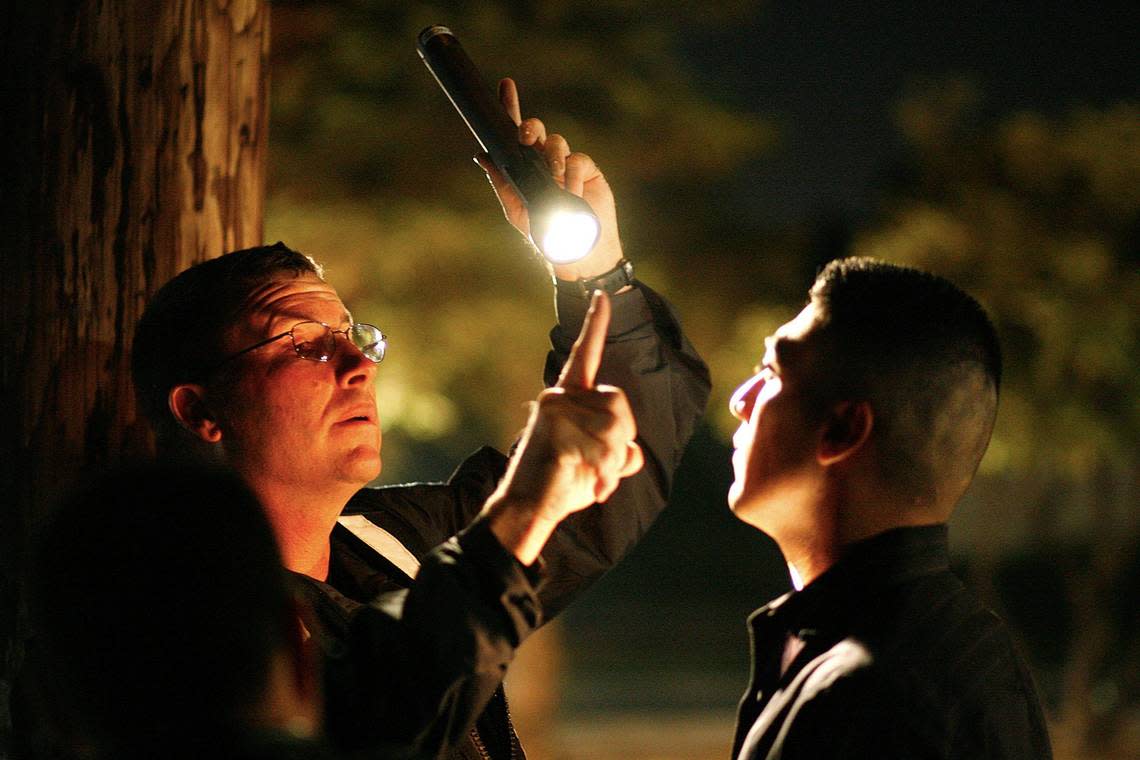Do I have to comply with law enforcement at a DUI checkpoint? See what California law says

While law enforcement can legally conduct DUI checkpoints across California — and must announce the date and general location beforehand, what does California law say about your duty as a driver?
Are you required to comply?
Here’s what we found:
Do I have to comply with law enforcement?
The law: California Vehicle Code 2814.2 says all drivers must stop and submit to a sobriety checkpoint inspection when law enforcement requires it.
Once a driver is at the checkpoint, they must comply with law enforcement as well as supply their license and registration at an officer’s request, the vehicle code states.
However, a driver is not legally obligated to submit to field sobriety tests, pre-arrest breath tests, or cheek swabs at a DUI checkpoint, according to Shouse California Law Group.
“These tests are optional and a driver may refuse them without penalty (though doing so may result in the driver being arrested for DUI anyway),” the law website says. “If, however, the driver is lawfully arrested, refusing a post-arrest DUI breath test or DUI blood test is considered a chemical test refusal.”
What other rights do you have at a DUI checkpoint?
These are your rights, according to Riverside Law Offices of Grech and Packer:
Right to remain silent.
Right to refuse field sobriety tests.
Right to refuse Preliminary Alcohol Screening tests.
You also have the right to refuse a search of yourself, your car or your phone.
Can I avoid a DUI checkpoint?
If the driver has not yet been stopped by law enforcement, there are ways they can avoid the checkpoint.
How to avoid the checkpoint: There is no state or federal law that prohibits someone from turning around or finding another route — as long as it is safe to do so — to avoid a DUI checkpoint, according to Shouse California Law Group.
Why does California law enforcement tell the public about DUI checkpoints?
Before law enforcement conducts a DUI checkpoint, motorists will typically get a publicized warning before the stop and an approximate location where officers will be posted.
Why the heads-up?
It’s required by law, said Officer Cody Tapley, a spokesman for the Sacramento Police Department, in a September interview with The Sacramento Bee.
Tapley said there are several requirements outlining why law enforcement has to “do it that way,” including federal and state guidelines.
These guidelines include:
Checkpoints are established by supervising officers.
Drivers are stopped using a formula.
Proper lighting, signs, official cars and officers are used.
Checkpoints are fair and made by a government official.
The time and duration of the checkpoint was conducted in “good judgment.”
Official signs are stationed at the checkpoint.
Decrease the average time drivers are stopped.
The checkpoint is publicized before the event.
How does law enforcement choose checkpoint locations?
Checkpoint locations are primarily chosen based on both previous DUI-related crashes and arrests, according to an August news release from the Sacramento Police Department.
“The primary purpose of checkpoints is not to make arrests, but to promote public safety by deterring drivers from driving impaired,” the release states.
During a checkpoint, officers will typically check drivers for signs indicating that they are under the influence of alcohol or drugs, including prescription medications, marijuana and over-the-counter medications.
What are the penalties for driving under the influence?
Driving is a privilege, as outlined by the California Department of Motor Vehicles.
If you are stopped by law enforcement for driving under the influence, the DMV has the authority to revoke or suspend your driving privilege.
Drivers charged with a first-time DUI can also face an average of $13,500 in fines, fees and more.
The Bee’s Briana Taylor at The Sacramento Bee contributed to this story.

